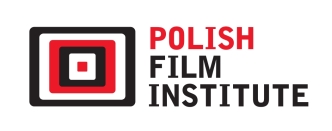The Metaphysics in “The Labyrinth” by Jan Lenica
Abstract
In the article on The Labyrinth (1962) by Jan Lenica, Hendrykowski – with the help of a series of micro-analyses focused on the semantic functions of individual elements (action, plot, narrative, protagonist, characters, music etc.) – discovers new layers of interpretation of this famous short feature film. The author points to the links between the Aristotelian poetics of this film with the original vision of modern civilization. He concludes that: The animator has the ability to free his imagination from that which binds and restricts it. In order to do it he uses the language of moving images loaded with symbolic meaning, images that can show things as they really are. As a cinema artist he is not limited by the world created, or the laws of physics that govern the filmed (photographed) ‘in crudo’ reality, nor by the body of the actor.
Keywords:
Jan Lenica, animation, Polish cinemaReferences
Arystoteles. Metafizyka, tłum. K. Leśniak. Warszawa: PWN, 2009.
Google Scholar
Giżycki, Jerzy. „Ucieczka ze Strasznogrodu”. Ekran 11 (1963).
Google Scholar
Głowiński, Michał. Labirynt, przestrzeń obcości. W: Michał Głowiński. Mity przebrane. Kraków: Wydawnictwo Literackie, 1990.
Google Scholar
Irzykowski, Karol. Dziesiąta Muza. Zagadnienia estetyczne kina. Kraków: Wydawnictwo Literackie, 1982.
Google Scholar
Authors
Marek Hendrykowskikwartalnik.filmowy@ispan.pl
Adam Mickiewicz University, Poznań Poland
Historyk i teoretyk filmu, medioznawca, badacz kultury audiowizualnej, profesor zwyczajny w Katedrze Filmu, Telewizji i Nowych Mediów Uniwersytetu im. Adama Mickiewicza w Poznaniu, redaktor senior czasopisma naukowego „Images”, autor monografii książkowych: Film jako źródło historyczne (2000), Kanał (wspólnie z Donem Fredericksenem, 2007), Popiół i diament (2008), Komeda (2009), Eroica (2011), Film i moda (2011), Andrzej Munk (2011), Do widzenia, do jutra (2012), Morgenstern (2012), Najlepsze kasztany. Księga cytatów polskiego filmu (2013), Semiotyka ruchomych obrazów (2014) oraz Współczesna adaptacja filmowa (2014).
Statistics
Abstract views: 83PDF downloads: 34
License
Copyright (c) 2016 Marek Hendrykowski

This work is licensed under a Creative Commons Attribution 4.0 International License.
The author grants the publisher a royalty-free non-exclusive licence (CC BY 4.0) to use the article in Kwartalnik Filmowy, retains full copyright, and agrees to identify the work as first having been published in Kwartalnik Filmowy should it be published or used again (download licence agreement). The journal is published under the CC BY 4.0 licence. By submitting an article, the author agrees to make it available under this licence.
In issues from 105-106 (2019) to 119 (2022) all articles were published under the CC BY-NC-ND 4.0 licence. During this period the authors granted a royalty-free non-exclusive licence (CC BY-ND 4.0) to use their article in „Kwartalnik Filmowy”, retained full copyright, and agreed to identify the work as first having been published in our journal should it be published or used again.
Most read articles by the same author(s)
- Marek Hendrykowski, How the Polish Film School Was Terminated , Kwartalnik Filmowy: No. 103 (2018): Young Polish Cinema – Confrontation of Generations
- Marek Hendrykowski, Can Leni Riefenstahl Be Forgiven? , Kwartalnik Filmowy: No. 89-90 (2015): Redefinitions of the Classics
- Marek Hendrykowski, Universalism and Ethnocentrism in Polish Cinema , Kwartalnik Filmowy: No. 95 (2016): Transnational Dimension of Polish Cinema
- Marek Hendrykowski, Taking Off to the Other Side of Atlantic: The American Debut of Miloš Forman , Kwartalnik Filmowy: No. 93-94 (2016): American Cinema
- Marek Hendrykowski, Fractal Time: On Evolution of the Notions of Time in Contemporary Cinema , Kwartalnik Filmowy: No. 86 (2014): Dimensions of Time
- Marek Hendrykowski, Cinema and Theatre – Cultural Collision of the Media (1895-1914) , Kwartalnik Filmowy: No. 87-88 (2014): Film and Theatre
- Marek Hendrykowski, Migratory Themes as the Memory of Cinema , Kwartalnik Filmowy: No. 97-98 (2017): Wandering Motifs
- Marek Hendrykowski, Song in the Polish Film of the Socialist Era , Kwartalnik Filmowy: No. 91 (2015): Film Between Pop Music and Pop Culture
- Marek Hendrykowski, The Poetics of “Holiday” by Zbigniew Rybczyński , Kwartalnik Filmowy: No. 100 (2017): On Celebrating
- Marek Hendrykowski, The Temple of New Faith: Film Images of Building of the Palace of Culture 1952-1955 , Kwartalnik Filmowy: No. 92 (2015): Polish Cinema and Politics
Similar Articles
- Paweł Sitkiewicz, Return to Visual Cinema. Borowczyk and Lenica in the Team of Film Authors “Kadr” , Kwartalnik Filmowy: No. 105-106 (2019): Cinema and Political Transformation
You may also start an advanced similarity search for this article.











